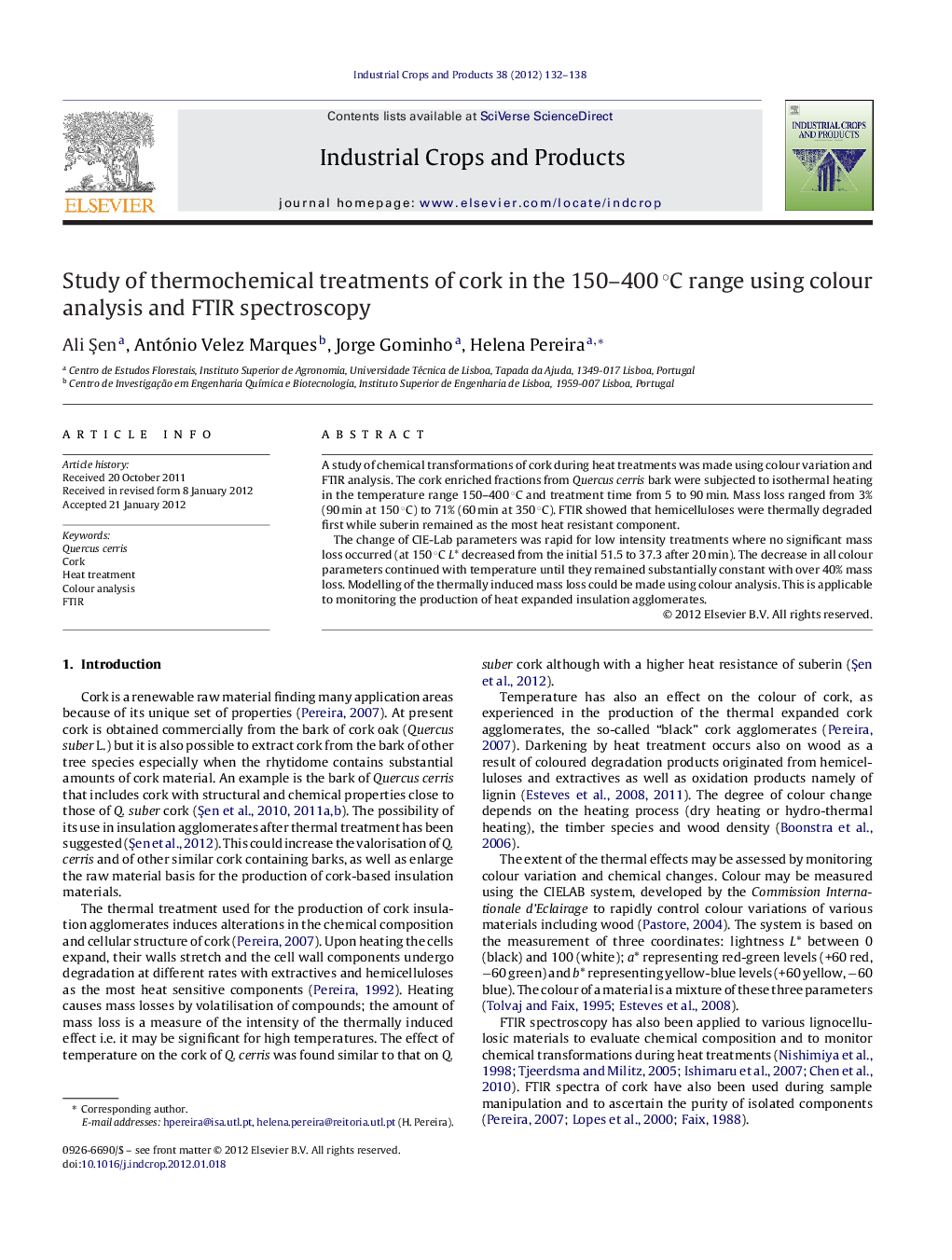| Article ID | Journal | Published Year | Pages | File Type |
|---|---|---|---|---|
| 4514294 | Industrial Crops and Products | 2012 | 7 Pages |
A study of chemical transformations of cork during heat treatments was made using colour variation and FTIR analysis. The cork enriched fractions from Quercus cerris bark were subjected to isothermal heating in the temperature range 150–400 °C and treatment time from 5 to 90 min. Mass loss ranged from 3% (90 min at 150 °C) to 71% (60 min at 350 °C). FTIR showed that hemicelluloses were thermally degraded first while suberin remained as the most heat resistant component.The change of CIE-Lab parameters was rapid for low intensity treatments where no significant mass loss occurred (at 150 °C L* decreased from the initial 51.5 to 37.3 after 20 min). The decrease in all colour parameters continued with temperature until they remained substantially constant with over 40% mass loss. Modelling of the thermally induced mass loss could be made using colour analysis. This is applicable to monitoring the production of heat expanded insulation agglomerates.
► FTIR showed that hemicelluloses were thermally degraded first while suberin remained as the most heat resistant component. ► The CIE-Lab parameters decrease already at low intensity thermal treatments and become constant over 40% mass loss. ► Modelling of thermally induced mass loss to be applied in industrial black agglomerate production was made using colour analysis. ► FTIR spectral features may be used to check the cork purity of the fractionated material. ► Fractionation of Quercus cerris bark will need additional refinement to increase cork proportion in the material.
